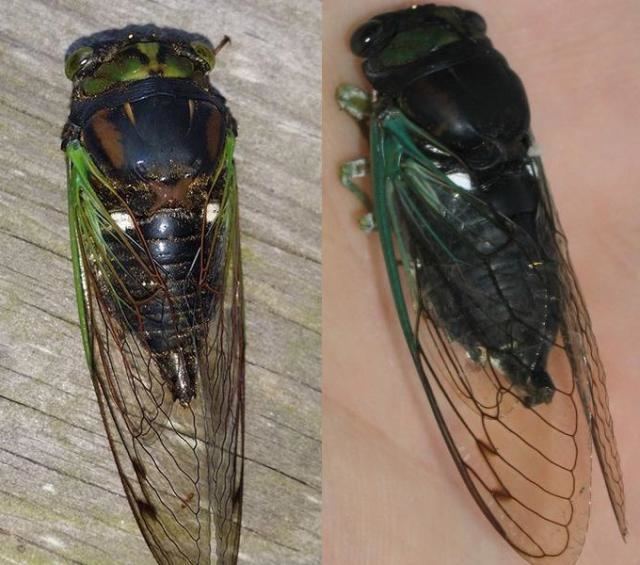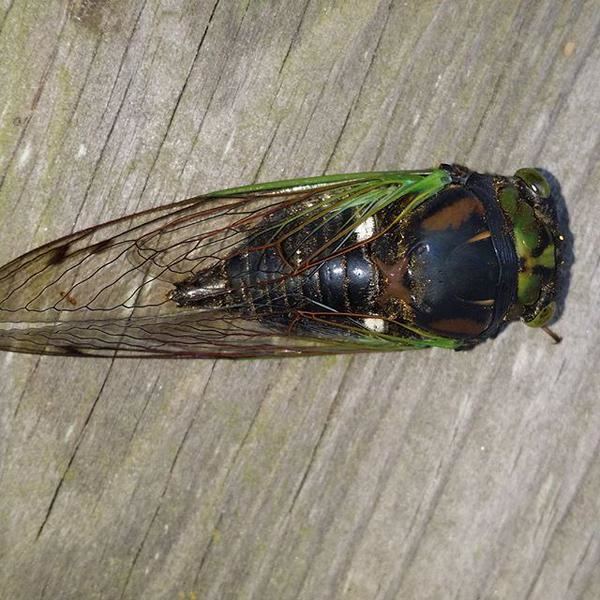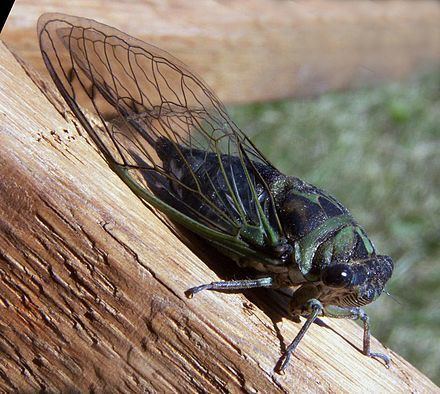Kingdom Animalia Subfamily Cicadinae Higher classification Cicada Order True bugs | Family Cicadidae Phylum Arthropoda Rank Genus | |
 | ||
Similar Cicadas, Dog‑day cicada, Insect, True bugs, Neotibicen tibicen | ||
Neotibicen nymph middletown nj 2016
The genus Neotibicen comprises large-bodied Cicadidae appearing in late summer or autumn in North America. Many colloquial names exist for Neotibicen, including locust, and dog-day cicada. Until recently, these species were all in the genus Tibicen, which was redefined so as to include only a few European species, while species from the Western US and Mexico are now placed in a separate genus, Hadoa.
Contents
- Neotibicen nymph middletown nj 2016
- Neotibicen auletes largest cicada in north america
- Communication
- Predators
- References

Neotibicen species are the most common cicada in the Eastern United States. Unlike periodical cicadas, whose swarms occur at 13- or 17-year intervals, Neotibicen species can be seen every year, hence their nickname "annual cicadas". The life-cycle of an individual, however, is more than a year. Nymphs spend two or three years feeding on tree roots before they emerge. Their annual reappearance is due to overlapping generations.

Neotibicen cicadas are 1–2 inches (25–51 mm) long, with characteristic green, brown, and black markings on the top of the thorax, and tented, membranous wings extending past the abdomen. The fore pair are about twice the length of the hind pair. Adults feed using their beak to tap into the xylem of plants; nymphs feed from the xylem of roots.

Neotibicen auletes largest cicada in north america
Communication

Like other members of the subfamily Cicadinae, Neotibicen species have loud, complex songs, even (in many cases) distinct song phrases.

Males produce loud calls in the afternoon or evening (depending on the species) to attract females. These sounds, distinctive for each species, are produced by organs below the abdomen's base. These calls range from a loud buzz to a long rattling sound.
Predators
Many animals feed on cicadas, which usually occurs during the final days when they become easy prey near the ground. One of the more notable predators is the cicada killer. This is a large wasp that catches the dog-day cicada. After catching and stinging the insect to paralyze it, the cicada killer carries it back to its hole and drags it underground to a chamber where it lays its eggs in the paralyzed cicada. When the eggs hatch, the wasp larvae feed on the paralyzed, but still living, cicada.
